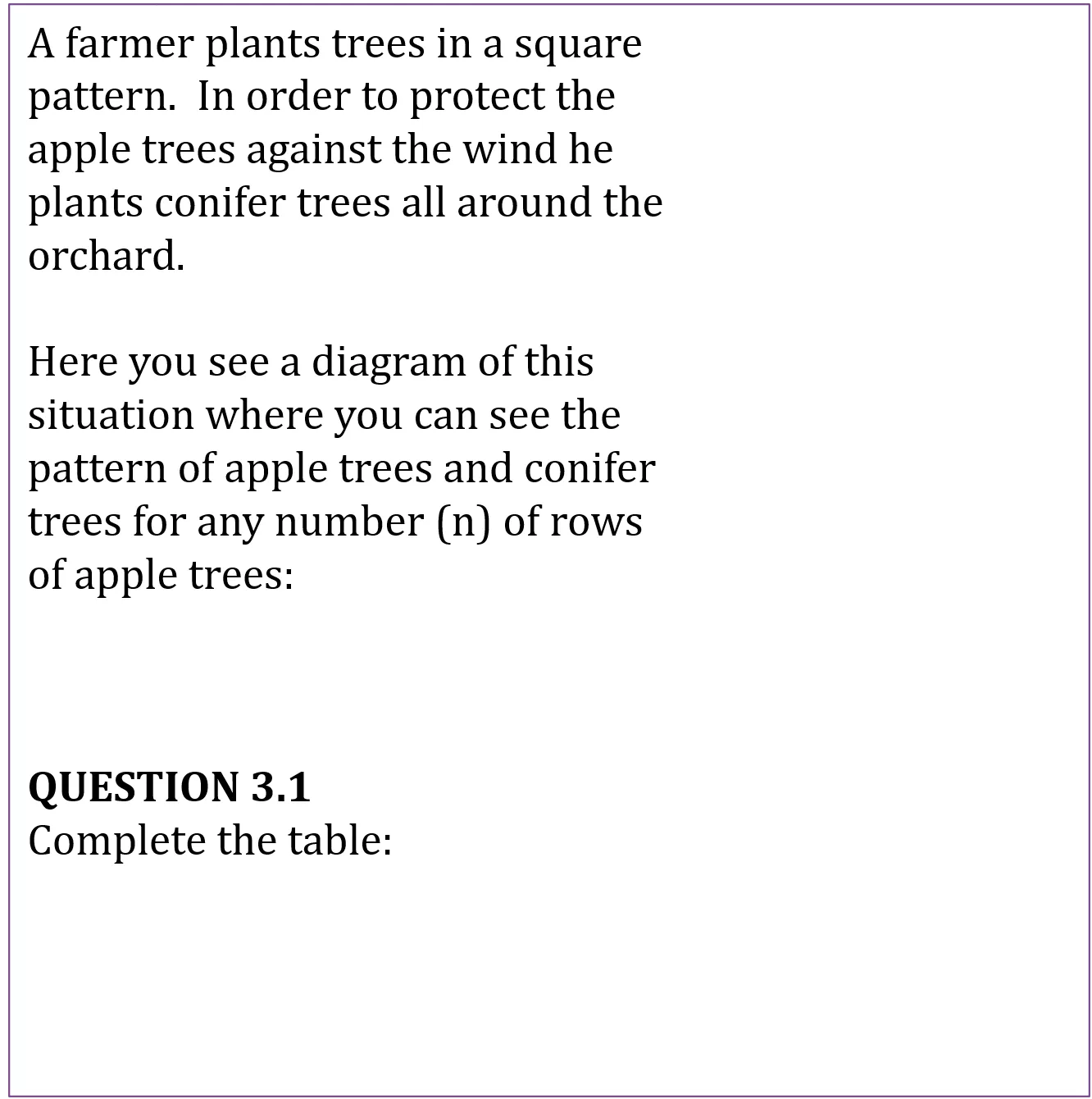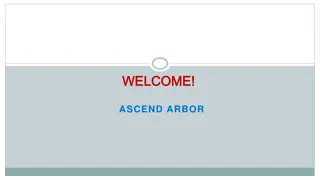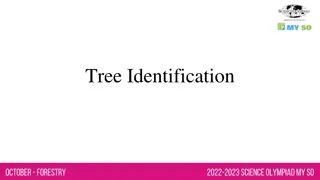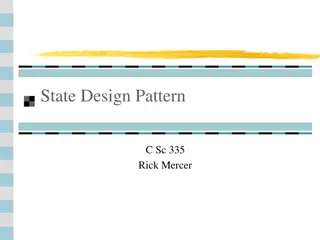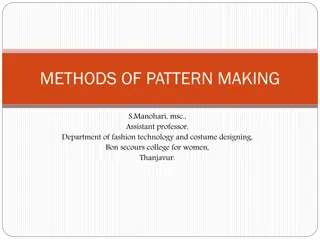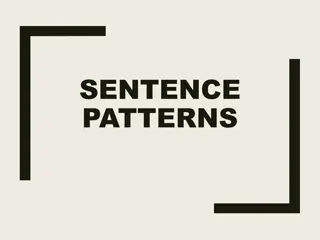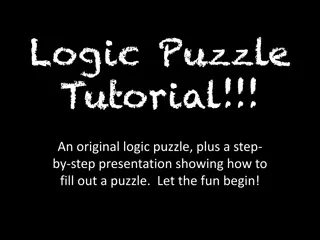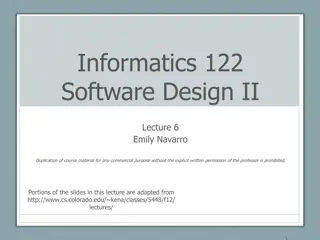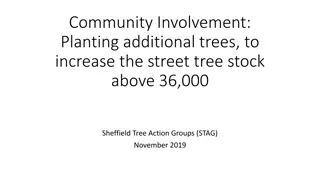Solving the Apple Tree and Conifer Tree Pattern Puzzle
In this mathematics unit, we explore a scenario where a farmer plants trees in a square pattern, with conifer trees surrounding the apple trees for protection against the wind. The task involves completing a table to understand the pattern for different numbers of rows of apple trees. Through this exercise, mathematical techniques like pattern recognition and table completion are applied to analyze the relationship between the apple and conifer trees' arrangement.
Download Presentation

Please find below an Image/Link to download the presentation.
The content on the website is provided AS IS for your information and personal use only. It may not be sold, licensed, or shared on other websites without obtaining consent from the author.If you encounter any issues during the download, it is possible that the publisher has removed the file from their server.
You are allowed to download the files provided on this website for personal or commercial use, subject to the condition that they are used lawfully. All files are the property of their respective owners.
The content on the website is provided AS IS for your information and personal use only. It may not be sold, licensed, or shared on other websites without obtaining consent from the author.
E N D
Presentation Transcript
Mathematics Unit 3: Apples What do we want to find out? What do we want to find out? A farmer plants trees in a square pattern. In order to protect the apple trees against the wind he plants conifer trees all around the orchard. What useful information do we know? What useful information do we know? What other mathematical techniques do we need to apply? What other mathematical techniques do we need to apply? Here you see a diagram of this situation where you can see the pattern of apple trees and conifer trees for any number (n) of rows of apple trees: What have we learned? What have we learned? QUESTION 3.1 Complete the table:
Mathematics Unit 3: Apples What do we want to find out? What do we want to find out? A farmer plants trees in a square pattern. In order to protect the apple trees against the wind he plants conifer trees all around the orchard. What useful information do we know? What useful information do we know? What other mathematical techniques do we need to apply? What other mathematical techniques do we need to apply? Here you see a diagram of this situation where you can see the pattern of apple trees and conifer trees for any number (n) of rows of apple trees: What have we learned? What have we learned? QUESTION 3.1 Complete the table: Back to start Back to start
Mathematics Unit 3: Apples What do we want to find out? What do we want to find out? A farmer plants trees in a square pattern. In order to protect the apple trees against the wind he plants conifer trees all around the orchard. What useful information do we know? What useful information do we know? What other mathematical techniques do we need to apply? What other mathematical techniques do we need to apply? Here you see a diagram of this situation where you can see the pattern of apple trees and conifer trees for any number (n) of rows of apple trees: What have we learned? What have we learned? QUESTION 3.1 Complete the table: Back to start Back to start
Mathematics Unit 3: Apples What do we want to find out? What do we want to find out? A farmer plants trees in a square pattern. In order to protect the apple trees against the wind he plants conifer trees all around the orchard. What useful information do we know? What useful information do we know? What other mathematical techniques do we need to apply? What other mathematical techniques do we need to apply? Here you see a diagram of this situation where you can see the pattern of apple trees and conifer trees for any number (n) of rows of apple trees: What have we learned? What have we learned? QUESTION 3.1 Complete the table: Back to start Back to start
Mathematics Unit 3: Apples What do we want to find out? What do we want to find out? A farmer plants trees in a square pattern. In order to protect the apple trees against the wind he plants conifer trees all around the orchard. What useful information do we know? What useful information do we know? What other mathematical techniques do we need to apply? What other mathematical techniques do we need to apply? Here you see a diagram of this situation where you can see the pattern of apple trees and conifer trees for any number (n) of rows of apple trees: What have we learned? What have we learned? QUESTION 3.1 Complete the table: Back to start Back to start
Mathematics Unit 3: Apples What do we want to find out? What do we want to find out? QUESTION 3.2 There are two formulae you can use to calculate the number of apple trees and the number of conifer trees for the pattern described: What useful information do we know? What useful information do we know? What other mathematical techniques do we need to apply? What other mathematical techniques do we need to apply? Number of apple trees = ?2 What have we learned? What have we learned? Number of conifer trees = 8? where ? is the number of rows of apple trees. There is a value of ? for which the number of apple trees equals the number of conifer trees. Find the value of ? and show you method of calculating this.
Mathematics Unit 3: Apples What do we want to find out? What do we want to find out? QUESTION 3.2 There are two formulae you can use to calculate the number of apple trees and the number of conifer trees for the pattern described: What useful information do we know? What useful information do we know? What other mathematical techniques do we need to apply? What other mathematical techniques do we need to apply? Number of apple trees = ?2 What have we learned? What have we learned? Number of conifer trees = 8? where ? is the number of rows of apple trees. There is a value of ? for which the number of apple trees equals the number of conifer trees. Find the value of ? and show you method of calculating this. Back to start Back to start
Mathematics Unit 3: Apples What do we want to find out? What do we want to find out? QUESTION 3.2 There are two formulae you can use to calculate the number of apple trees and the number of conifer trees for the pattern described: What useful information do we know? What useful information do we know? What other mathematical techniques do we need to apply? What other mathematical techniques do we need to apply? Number of apple trees = ?2 What have we learned? What have we learned? Number of conifer trees = 8? where ? is the number of rows of apple trees. There is a value of ? for which the number of apple trees equals the number of conifer trees. Find the value of ? and show you method of calculating this. Back to start Back to start
Mathematics Unit 3: Apples What do we want to find out? What do we want to find out? QUESTION 3.2 There are two formulae you can use to calculate the number of apple trees and the number of conifer trees for the pattern described: What useful information do we know? What useful information do we know? What other mathematical techniques do we need to apply? What other mathematical techniques do we need to apply? Number of apple trees = ?2 What have we learned? What have we learned? Number of conifer trees = 8? where ? is the number of rows of apple trees. There is a value of ? for which the number of apple trees equals the number of conifer trees. Find the value of ? and show you method of calculating this. Back to start Back to start
Mathematics Unit 3: Apples What do we want to find out? What do we want to find out? QUESTION 3.2 There are two formulae you can use to calculate the number of apple trees and the number of conifer trees for the pattern described: What useful information do we know? What useful information do we know? What other mathematical techniques do we need to apply? What other mathematical techniques do we need to apply? Number of apple trees = ?2 What have we learned? What have we learned? Number of conifer trees = 8? where ? is the number of rows of apple trees. There is a value of ? for which the number of apple trees equals the number of conifer trees. Find the value of ? and show you method of calculating this. Back to start Back to start
Mathematics Unit 3: Apples What do we want to find out? What do we want to find out? There are two formulae you can use to calculate the number of apple trees and the number of conifer trees for the pattern described: What useful information do we know? What useful information do we know? What other mathematical techniques do we need to apply? What other mathematical techniques do we need to apply? Number of apple trees = ?2 Number of conifer trees = 8? What have we learned? What have we learned? where ? is the number of rows of apple trees. QUESTION 3.3 Suppose the farmer wants to make a much larger orchard with many rows of trees. As the farmer makes the orchard bigger, which will increase more quickly: the number of apple trees or the number of conifer trees? Explain how you found your answer.
Mathematics Unit 3: Apples What do we want to find out? What do we want to find out? There are two formulae you can use to calculate the number of apple trees and the number of conifer trees for the pattern described: What useful information do we know? What useful information do we know? What other mathematical techniques do we need to apply? What other mathematical techniques do we need to apply? Number of apple trees = ?2 Number of conifer trees = 8? What have we learned? What have we learned? where ? is the number of rows of apple trees. QUESTION 3.3 Suppose the farmer wants to make a much larger orchard with many rows of trees. As the farmer makes the orchard bigger, which will increase more quickly: the number of apple trees or the number of conifer trees? Explain how you found your answer. Back to start Back to start
Mathematics Unit 3: Apples What do we want to find out? What do we want to find out? There are two formulae you can use to calculate the number of apple trees and the number of conifer trees for the pattern described: What useful information do we know? What useful information do we know? What other mathematical techniques do we need to apply? What other mathematical techniques do we need to apply? Number of apple trees = ?2 Number of conifer trees = 8? What have we learned? What have we learned? where ? is the number of rows of apple trees. QUESTION 3.3 Suppose the farmer wants to make a much larger orchard with many rows of trees. As the farmer makes the orchard bigger, which will increase more quickly: the number of apple trees or the number of conifer trees? Explain how you found your answer. Back to start Back to start
Mathematics Unit 3: Apples What do we want to find out? What do we want to find out? There are two formulae you can use to calculate the number of apple trees and the number of conifer trees for the pattern described: What useful information do we know? What useful information do we know? What other mathematical techniques do we need to apply? What other mathematical techniques do we need to apply? Number of apple trees = ?2 Number of conifer trees = 8? What have we learned? What have we learned? where ? is the number of rows of apple trees. QUESTION 3.3 Suppose the farmer wants to make a much larger orchard with many rows of trees. As the farmer makes the orchard bigger, which will increase more quickly: the number of apple trees or the number of conifer trees? Explain how you found your answer. Back to start Back to start
Mathematics Unit 3: Apples What do we want to find out? What do we want to find out? There are two formulae you can use to calculate the number of apple trees and the number of conifer trees for the pattern described: What useful information do we know? What useful information do we know? What other mathematical techniques do we need to apply? What other mathematical techniques do we need to apply? Number of apple trees = ?2 Number of conifer trees = 8? What have we learned? What have we learned? where ? is the number of rows of apple trees. QUESTION 3.3 Suppose the farmer wants to make a much larger orchard with many rows of trees. As the farmer makes the orchard bigger, which will increase more quickly: the number of apple trees or the number of conifer trees? Explain how you found your answer. Back to start Back to start
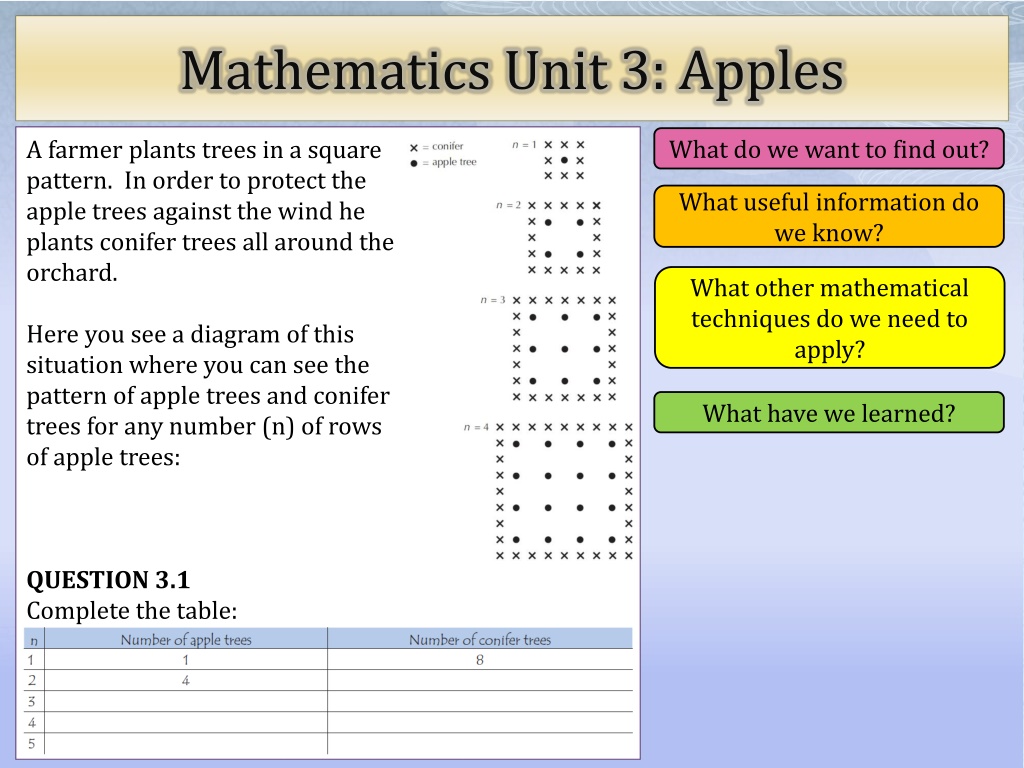
 undefined
undefined




